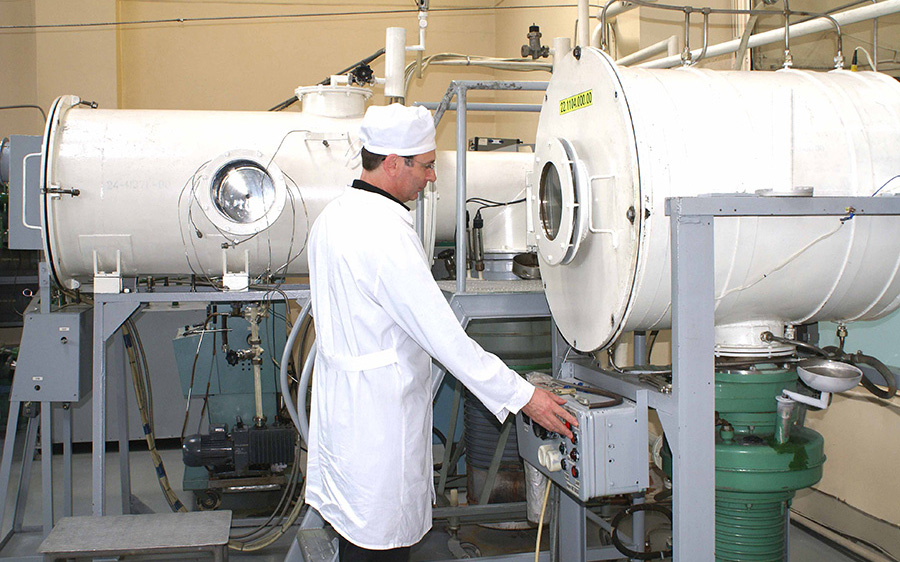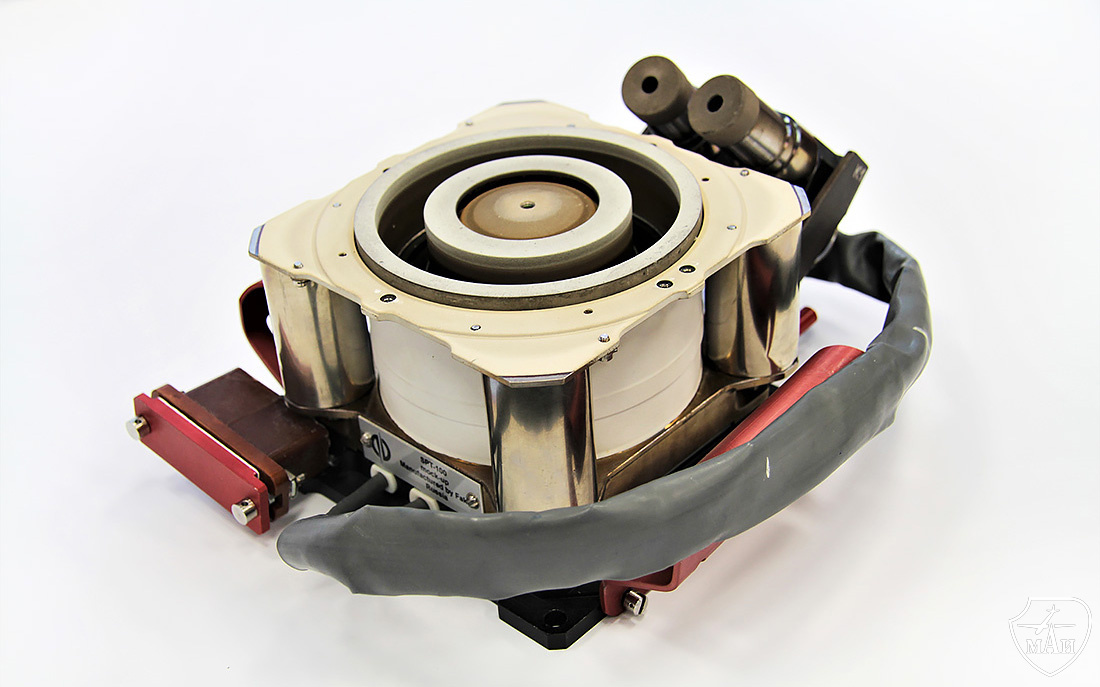MAI researcher will help widespread deployment of fuel-efficient rocket engines

 In 1982, the SPD-70 engine began to be used serially in the Cosmos and Luch geostationary satellites. Since 1994, SPD-100 engines have been used on Express and Guls series satellites. Since 2017, a number of foreign spacecraft have been using SPD-140 engines from the same range. All the above-mentioned engines were developed at OKB Fakel with scientific and technical support from MAI, using inventions created at the university. A great contribution to the development and implementation was made by specialists of the MAI: Vladimir Kim, Leonid Latyshev, Sergey Khartov, Harry Popov and many others.Despite their advantages, stationary plasma engines were not as widespread as liquid and solid propellant engines, which create thrust by releasing heat during the combustion of fuel components. They were mounted primarily on geostationary communications satellites, at suboptimal angles to keep the plasma jet from striking the structural components of the vehicle.
In 1982, the SPD-70 engine began to be used serially in the Cosmos and Luch geostationary satellites. Since 1994, SPD-100 engines have been used on Express and Guls series satellites. Since 2017, a number of foreign spacecraft have been using SPD-140 engines from the same range. All the above-mentioned engines were developed at OKB Fakel with scientific and technical support from MAI, using inventions created at the university. A great contribution to the development and implementation was made by specialists of the MAI: Vladimir Kim, Leonid Latyshev, Sergey Khartov, Harry Popov and many others.Despite their advantages, stationary plasma engines were not as widespread as liquid and solid propellant engines, which create thrust by releasing heat during the combustion of fuel components. They were mounted primarily on geostationary communications satellites, at suboptimal angles to keep the plasma jet from striking the structural components of the vehicle."Today, the interest in SPD is very high," says Denis Merkuryev. "This is due to the physical limitations of thermal engines: oxygen and hydrogen can't burn more intensely, no matter how much we want them to. In electric motors, which SPDs belong to, theoretically there are no such limitations: the more voltage we apply, the higher the speed will be."Science for technologyPlasma thrusters are attractive because of the parameter that the velocity of the propellant flowing out of the nozzle. Whereas liquid rocket engines have a velocity of 4 km/s, plasma thrusters have velocities of 10 km/s or more. This allows to spend at least 2.5 times less fuel, which is critically important for spacecraft, which, as you know, "carry everything with them".
"The use of SPD offers significant benefits, but also has a side effect. A jet of plasma escaping from an engine can damage elements of a spacecraft's structure, such as reducing the efficiency of solar panels and damaging antennas and other equipment," says Maevets. "That's why developing an accurate method of assessing the impact of the jet on the spacecraft is so important."The study will be conducted in a vacuum chamber. After placing the engine model inside the chamber, a simulated space vacuum will be created, and special probes capable of detecting electrons and ions will measure plasma parameters. The work is scheduled to be completed in a year and a half.
"Nowadays, they want to use SPDs practically everywhere, especially in small spacecraft and their constellations. They are quick to make, cheap to buy and do not require as much serious and time-consuming testing as traditional space systems. The research will be very useful for the development of such spacecraft and, in the future, for the creation of a new generation of aerospace vehicles," concludes Denis Merkuryev."Photo: OKB "Fakel"/Roskosmos